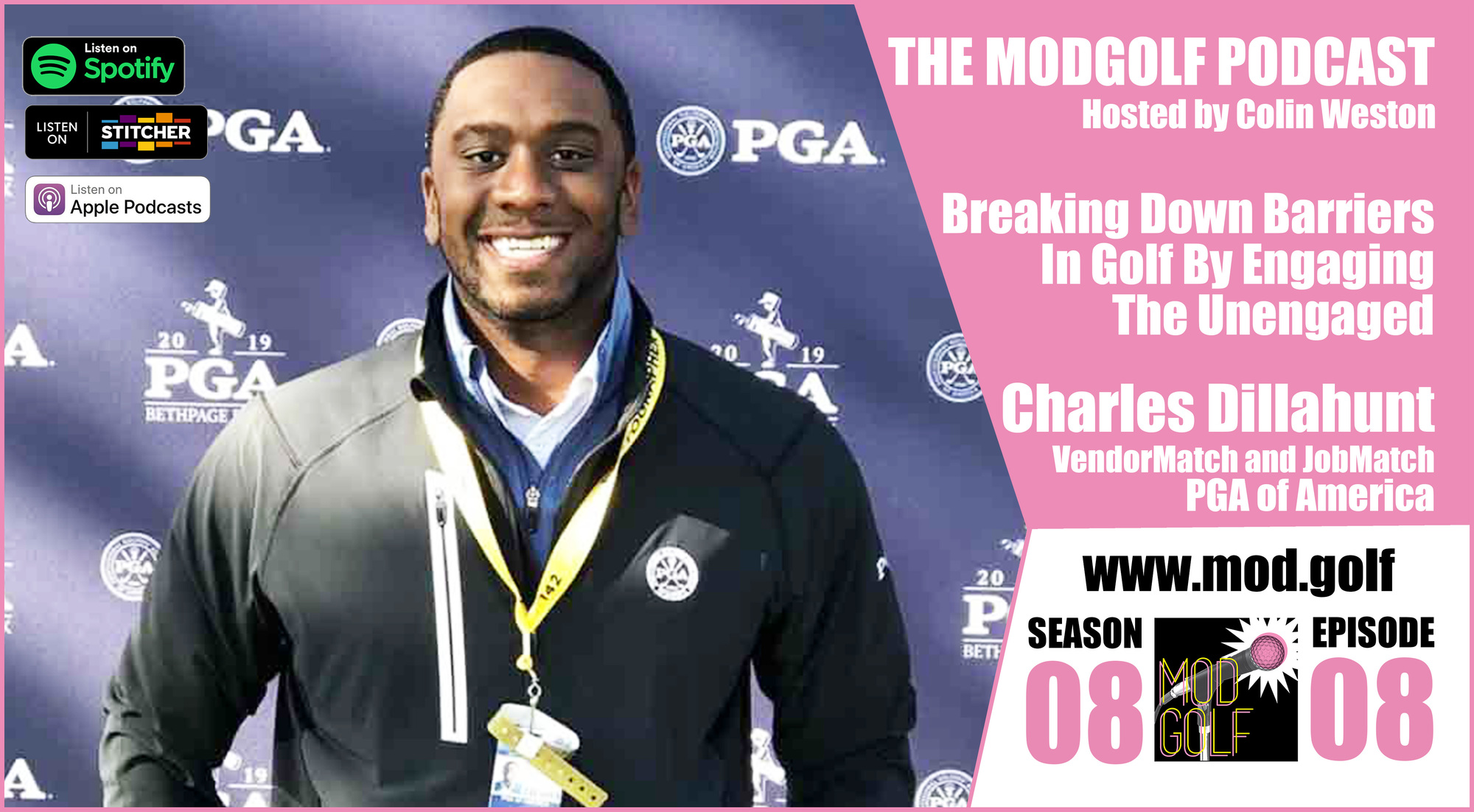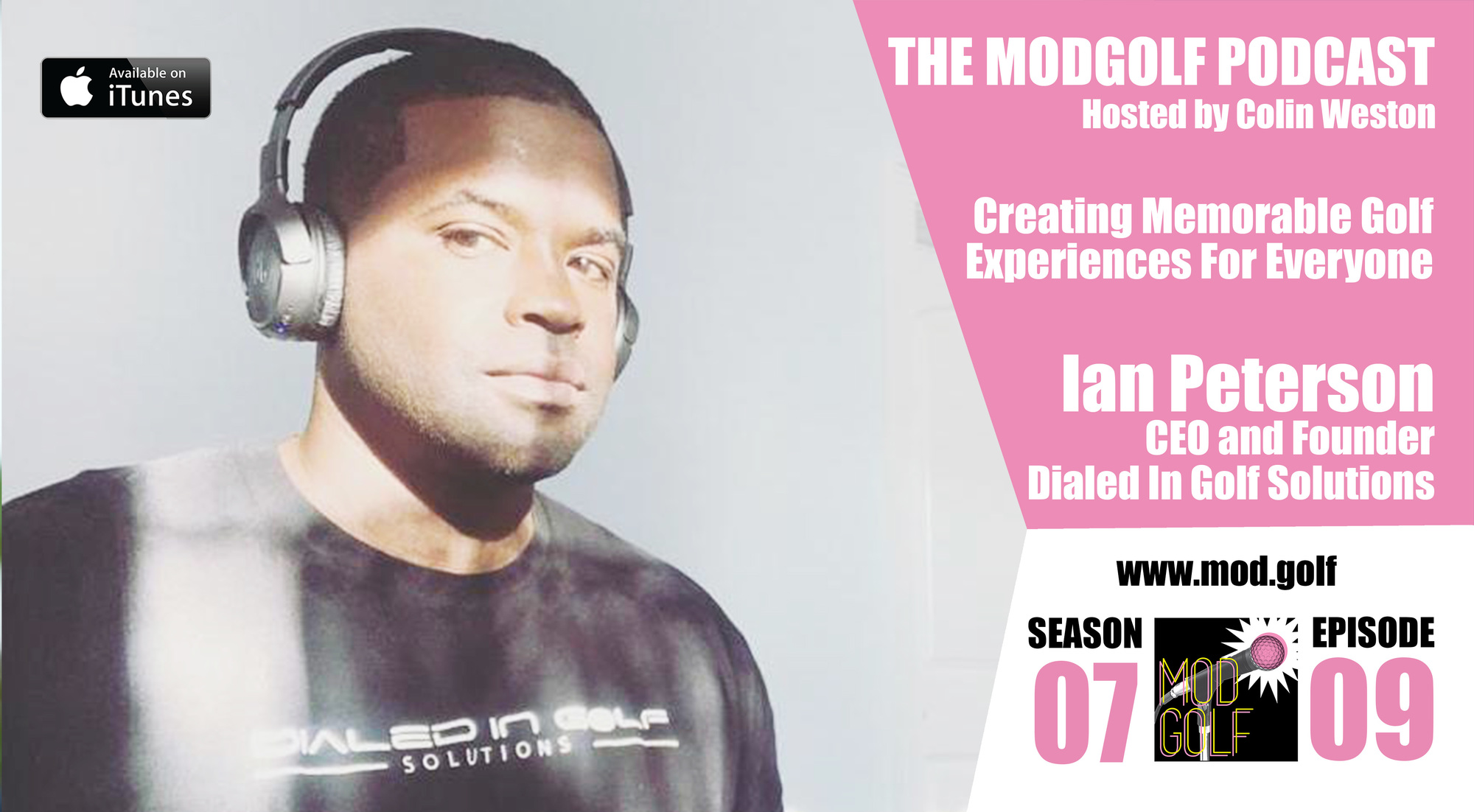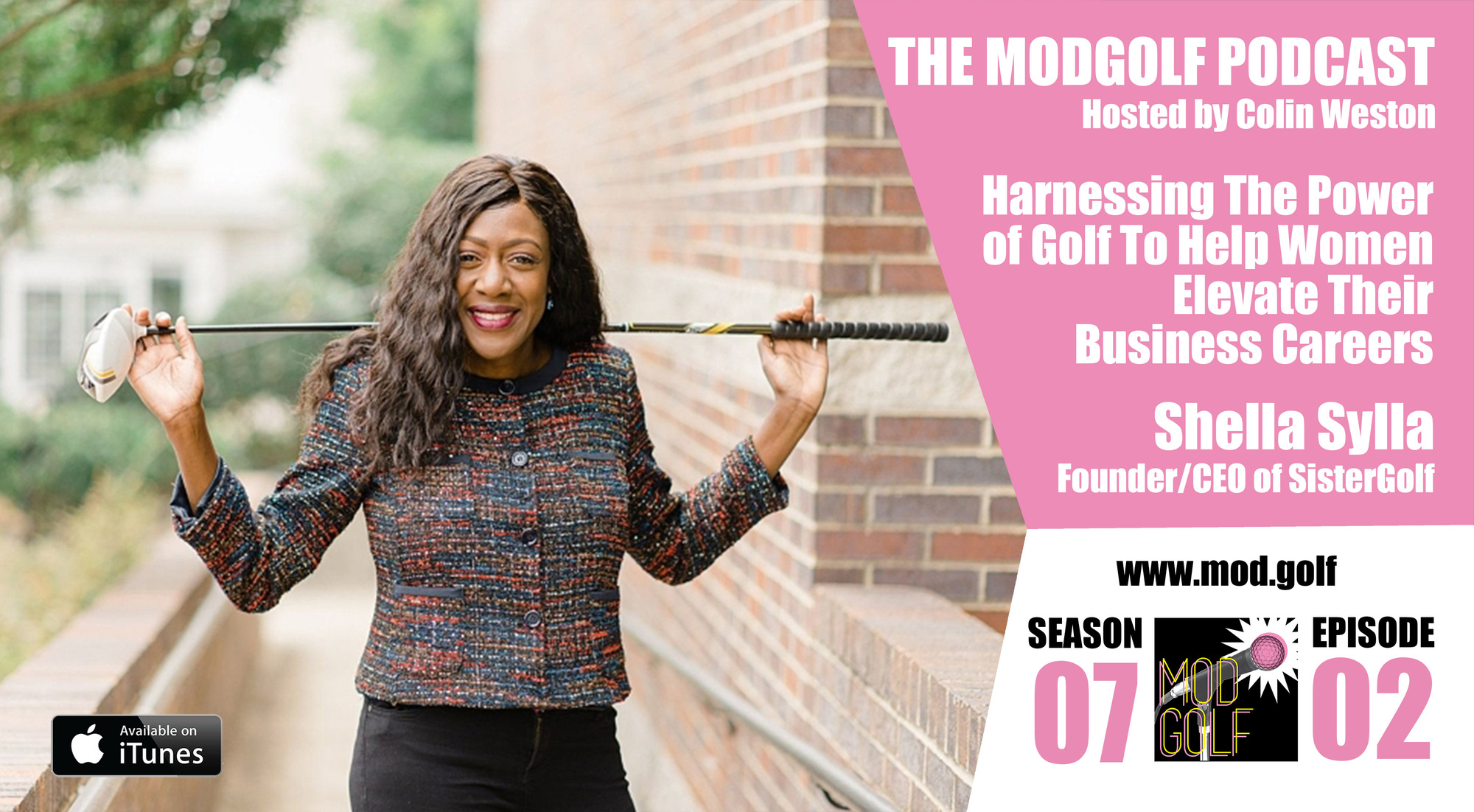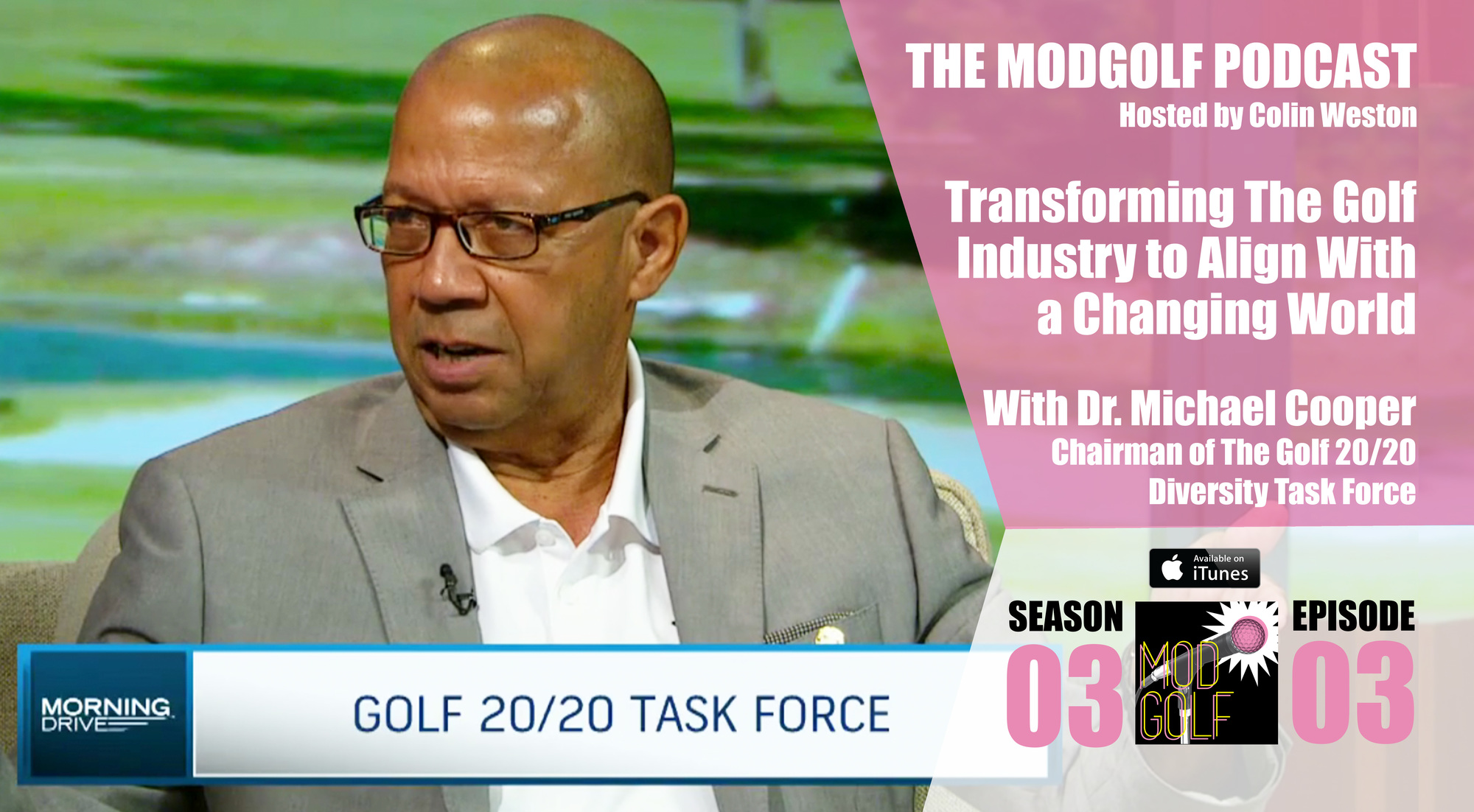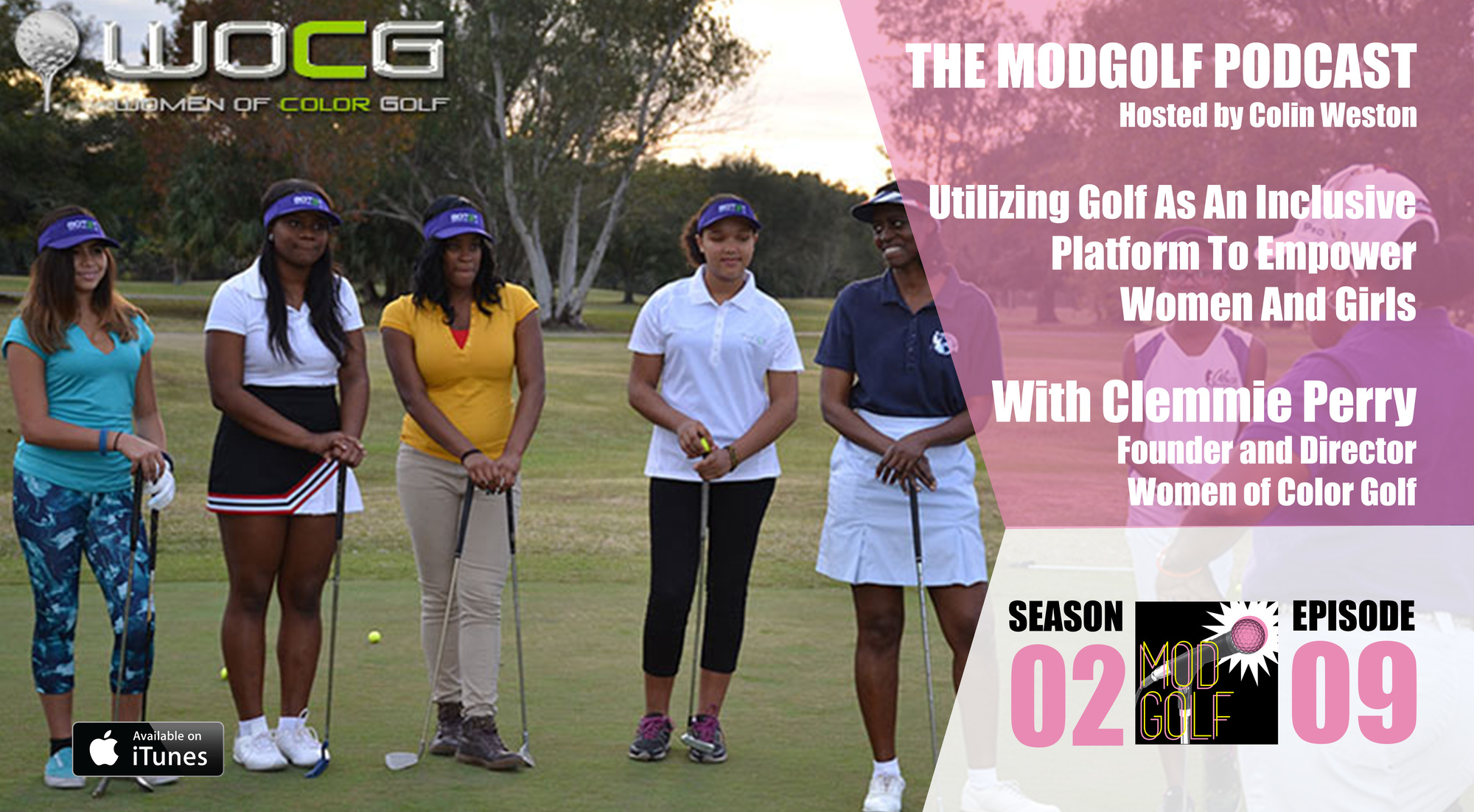To commemorate Black History Month, we are showcasing nine amazing people from the black community who I had the privilege to speak with on past episodes. We look forward to bringing you more stories that give underrepresented entrepreneurs and innovators a voice to share the positive impact they are making in golf and our communities.
What to hear about the latest golf innovation stories and enter in our ModGolf Giveaway contests for your chance to win awesome golf products and equipment? Then sign up and subscribe to our monthly newletter!
"It's so much bigger than just the technology involved. When we talk about creating The Wakanda For Golf, we're referring to Black Panther which was such a hit for people of colour because for the first time there's a hero that looks like us. Now talented young black golfers are going to be inspired by seeing people that look and talk like them, who are competing, practicing and grinding on their game."
Andy Walker, Director of The UGA Academy & Player Development joins us to share how he's passionately giving back to the game he loves. Click to listen
"I love when people want to learn golf. That's exciting to me. I feel that a big part of my job is like Love Connection. What I do is help people fall in love with golf." To open Season 9, LPGA Teaching Professional Dr. Greta Anderson - Founder of Dr. Greta Golf - joined us to share how she applies her PhD in Higher Learning and voracious curiosity to help students understand the WHY. Click to listen
How can eSports, Sneakerhead culture and a 17th century French philosopher shape one’s worldview on how to make golf more welcoming and inclusive for under-represented communities? After listening to our engaging conversation with The PGA of America’s Charles Dillahunt you will learn how. Click to listen
"We eventually learned how to simplify our product and experience offering while providing even a higher level of service and customer value." Ian Peterson - Founder and CEO of Dialed In Golf Solutions joins us to share his thoughts on innovating the golf industry. Click to listen
“If you have a business idea and years go by and it doesn't leave you, then you know that it's something you must pursue. That’s exactly what happened to me for eleven years before launching SisterGolf." We sit down with Shella Sylla, Business Golf Professional and Founder/CEO of SisterGolf to learn how she took the entrepreneurial leap to create a viable, scalable business model that didn't previously exist. Click to listen
On this impactful episode we featured two guests from PGA WORKS, Fellowship intern Tajma Brown and Program Specialist Rachel Mabee. PGA WORKS is a part of PGA REACH, the charitable foundation of the PGA of America. We talk about how The PGA WORKS Fellowship aspires to be a unique opportunity for recent college graduates from diverse backgrounds to acquire valuable experience in the golf industry. Click to listen
"Golf needs to giddy-up and change right now to keep up with an already changed world". Many people and organizations have talked for years about growing the game by connecting with under-represented groups, but Dr. Michael Cooper in one of a handful of passionate "Linking Agents" empowering existing community leaders with the tools and resources needed to actually make a difference regarding diversity and inclusion in golf. Click to listen
Make a difference in her community. That was Clemmie Perry's guiding principle that motivated her to use golf as the platform to empower women and girls of color shortly after picking up the game only four years ago. Her entrepreneurial vision and passion, combined with finding the personal courage to step outside her comfort zone has lead to the creation of both Women of Color Golf and Girls On The Green Tee. Click to listen
]]>
It's been two long years since I last attended The PGA Show in Orlando and although I was apprehensive about getting on a plane from Vancouver with the Omicron variant still swirling around us, I'm glad I made the decision to go. After hundreds of Zoom video calls over the past 24 months has pushed me to the point of burnout, reconnecting with old golf industry friends and meeting some new ones face to face was exactly the medicine my spirit needed. So here's a recap of my eight days in central Florida and my takeaways from golf's biggest industry event.
The Sunday before...
I was invited by Ty DeLavallade to play in The Deuce Winter Golf Tournament, where I had the pleasure to connect with amazing people who are passionately working to make the game more equitable and welcoming.
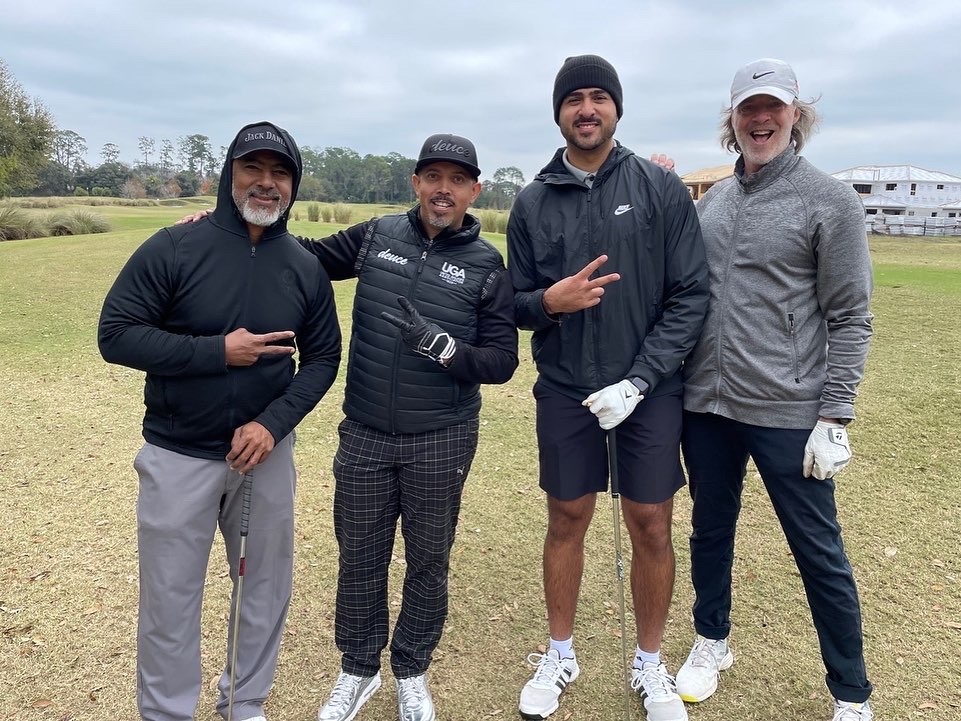
The Monday before...
The National Golf Course Owners Association (NGCOA) kicked off their Golf Business Conference with an engaging fireside chat with Brandel Chamblee and Agustín Pizá. They discussed the future of innovate course design and the value of experience design. BONUS: I connected with old friends Dave Shultz (NextLinks) and Clemmie Perry (Women of Color Golf) for the first time in three years!
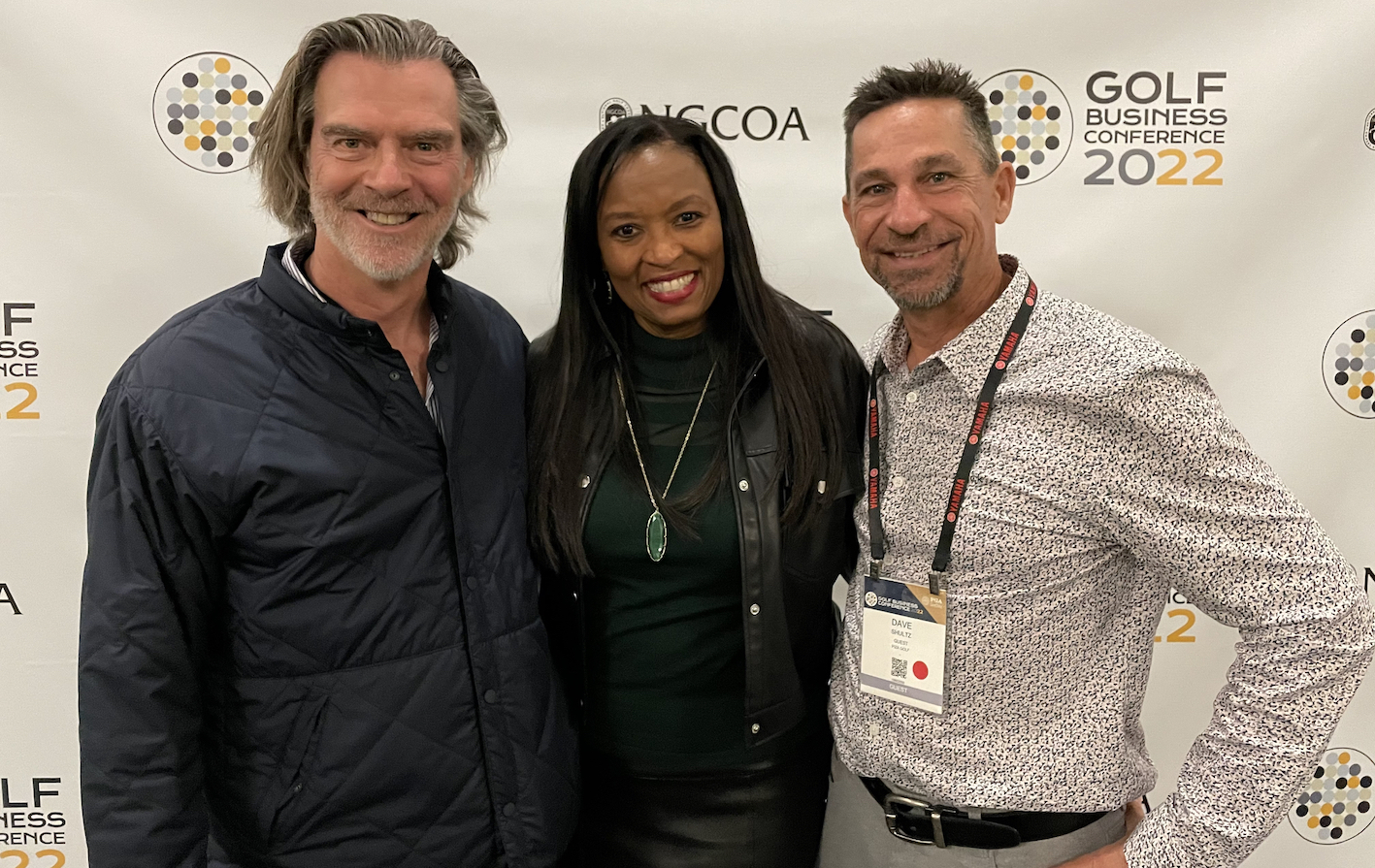
The Tuesday before...
After bailing on a round of golf (too cold for my Florida playing partners 🥶) I jumped on a shuttle bus to attend Demo Day at the Orange County National Golf Center. I knew beforehand that the big equipment companies (Ping, TaylorMade, Titleist, Callaway) weren't attending this year, but I was surprised by how empty the place was.
Normally the entire 360º range perimeter is jam packed and high energy, where this year they were at around 30% capacity. COVID and supply chain issues aside, the companies that did attend had the opportunity to garner more attention. I was impressed with Power Tee, Synthetic Turf International and Garmin Golf.
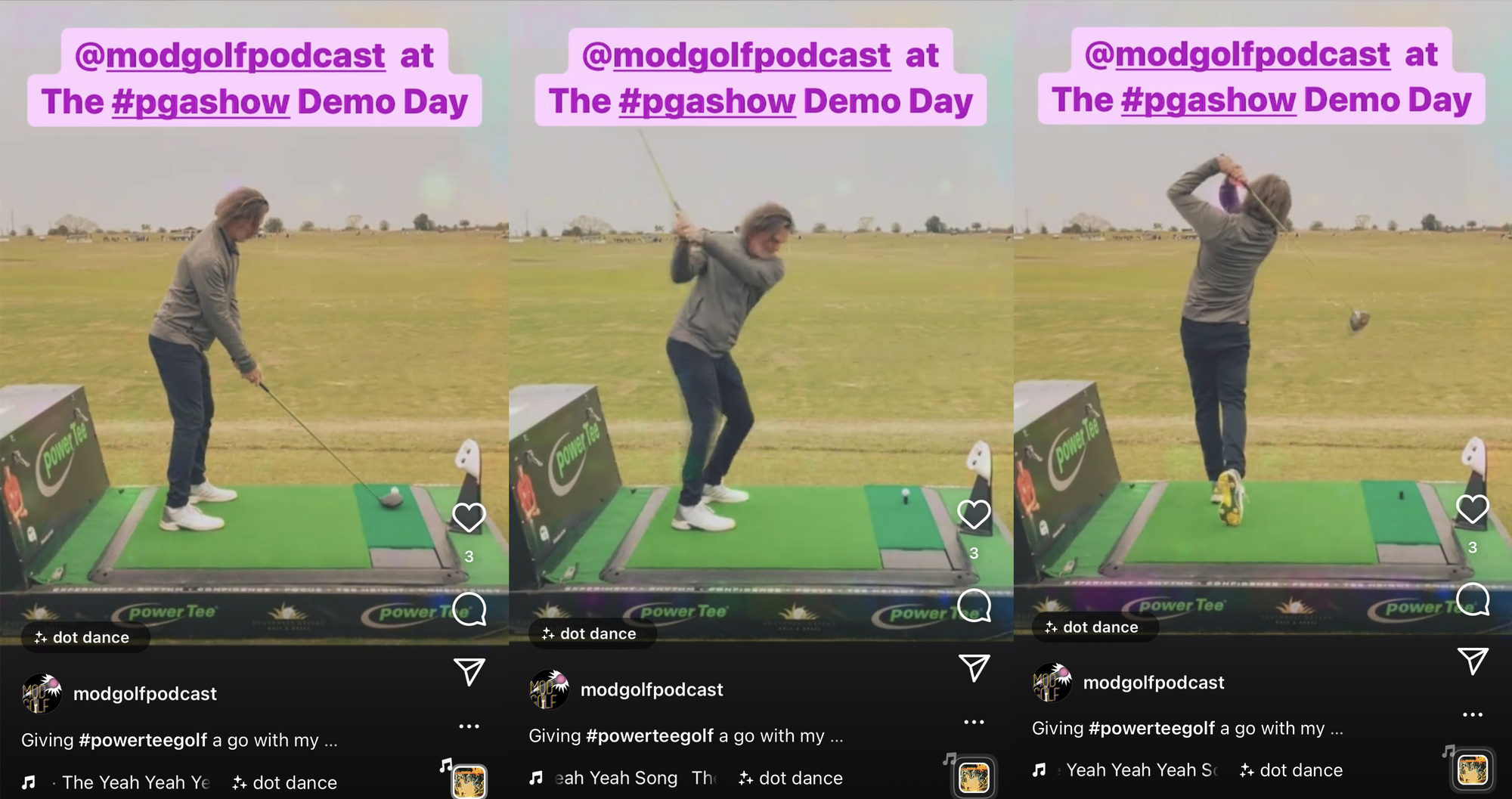
Wednesday (Day 1)...
After some morning meetings (great to see you again Rich Katz!) I walked the show floor to get the lay of the land. Less than half the size of previous shows, I congratulate Reed Exhibitions for delivering an experience that was designed to connect us all while respecting COVID safety protocols. Not an easy feat for Marc Simon, Sherry Major and the RX team but they pulled it off!
In the afternoon I was invited by Jim Beatty and Dr. Michael Cooper to attend the Diversity and Inclusion Forum. They have been working tirelessly for years to make the $85 billion/year golf industry more welcoming and accessible for BIPOC-led companies. Talk has finally turned to action as they now have funding to support initiatives that are having a positive impact and making a difference.
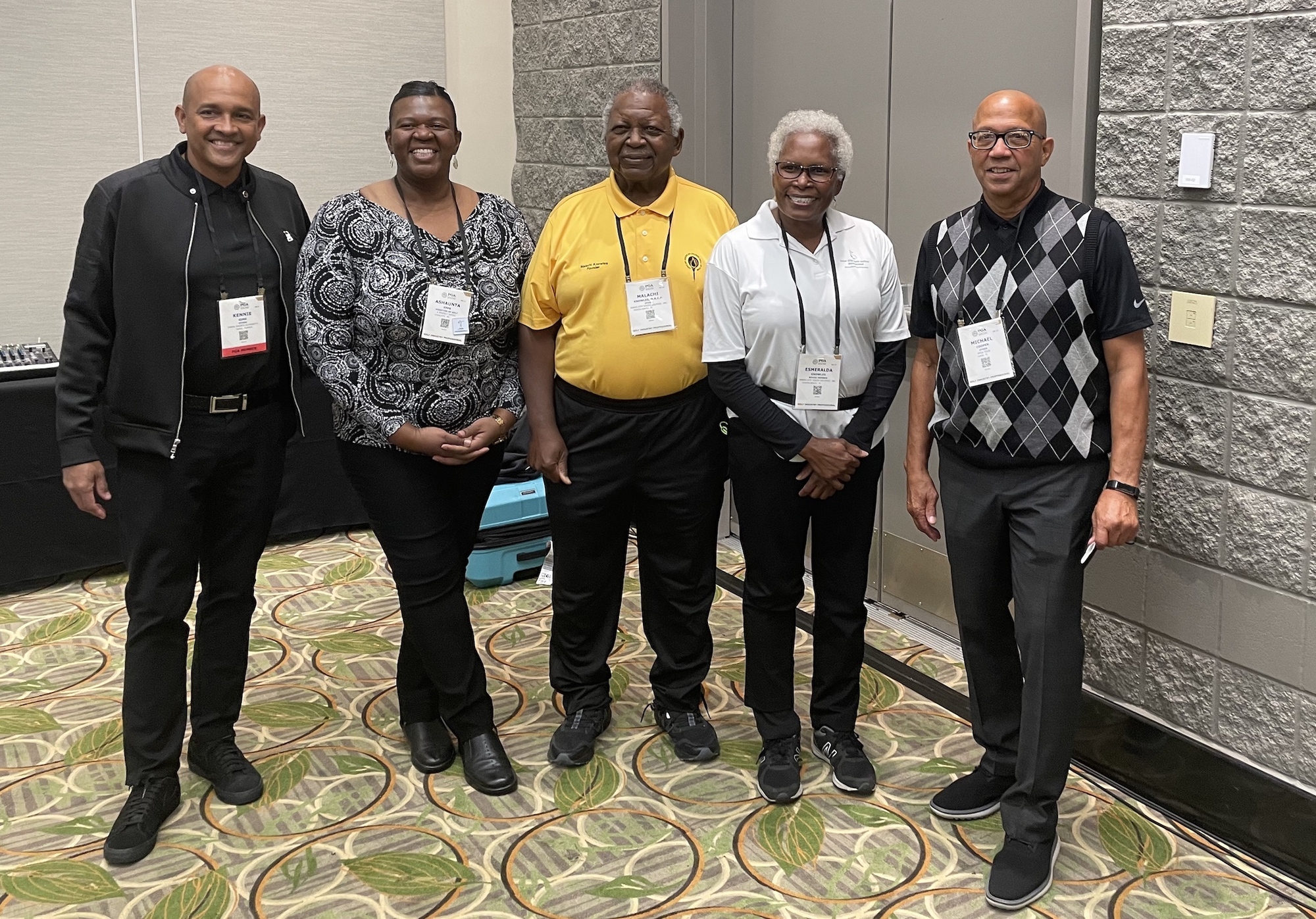
Thursday (Day 2)...
I first attended The Women's Golf Day panel discussion led by friend and Founder Elisa Gaudet. Now preparing for their 7th annual event taking place globally on June 7, #WomensGolfDay has grown to over 900 locations in 80 countries to welcome both new and experienced golf women to the game.
I quickly made it back to The PGA Golf Shows Media Center to record a pair of podcast conversations with Euforeia Golf Co. Founder Patrick Farris and Spark Golf CEO Charlie Klaus. We'll be publishing that episode next week!
In the afternoon I headed back out on the show floor where I met up with previous show guest Lisa O'Hurley, Founder of LOHLA Sport women's apparel and the founders of the new surf-inspired men's golf clothing company Live Forever Golf. I recommend that you check them out if you're into clothing that looks great both on and off the golf course.
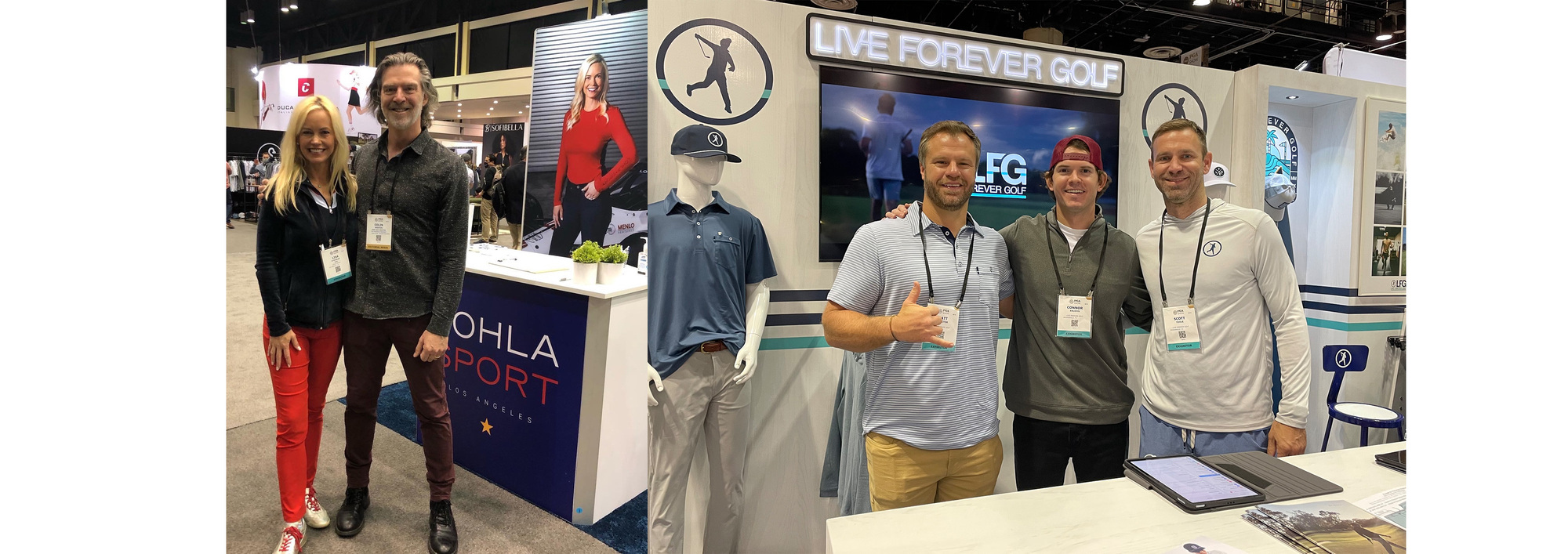
Friday (Day 3)...
The show wrapped up at 1pm so I got an early start to walk the floor one more time to follow up on some of the technology solutions that stood out for me the days before. Friday is a the least attended day, which gave me the opportunity to spend more time with some of the company reps. Established indoor simulator companies like About Golf and Golfzon continue to innovate as the quality of thier graphics, user interface and realism delivers a complete and engaging golf experience.
There were three technology-led putting training products at the show and I liked them all. France-based WELLPUTT is an early stage company that projects the putt break graphic, but their biggest differentiator is the platform of their BIGTILT product has hydraulic risers on both sides to physically change the break to create an infinite number of putting combinations. We'll be recording a podcast episode with WELLPUTT founders very soon! Korean-based EX PUTT is a hardware and software product that is a compact solution that allows you to connect with your flat screen TV to provide a putting practice experience that you can take on the road or in your living room.
German-based PuttView was founded in 2015 and delivers a video projected putting practice experience that shows you the break of the putt with three speed path options and then tracks the ball with a graphic trail once you strike it. My "Best In Show" award goes to their newest product for outdoor putting practice that uses a VR headset to create an augmented reality enviroment that allows you to see the break and speed of any length putt on an green. I had the chance to demo the product and the immersive experience was amazing!

Overall, I consider the 2022 PGA Show a success even though it was smaller in size compared to the pre-COVID years. What it lacked in quanity it made up for in quality. I look forward to attending the 2023 show hopefully without elbow bumping or needing to yell at people through a mask!


When I first looked at golf six years ago through my entrepreneurial lens, I saw an industry that was both in deep trouble and ripe for innovative creativity. The golf industry was on the decline, as over 20% or five million golfers had left the game, resulting in courses closing and equipment sales to drop. Golf courses and companies desperately wanted to connect with a younger and more culturally diverse audience, but their approach was to package the same products and experiences to a market sector that didn't care to buy what they were selling.
The recreational golf experience has several pain points that serve as multiple barriers to entry for new audiences. The main ones are:
- too hard to learn
- too expensive
- takes too much time
- doesn’t align with contemporary social lifestyles
- has an image problem of being stuffy and elitist
- intimidating and complicated
But over the past half decade golf has been experiencing a renaissance, as entreprenuers and influencers have looked outside the traditional golf industry box to attact new 'non-golfing customers' to the game. Rather than compete for the attention and wallets of the existing 20 million US golfers, real growth in the $84 billion/year golf industry lies in the ability to unlock underserved market segments of non-golfers.
The companies and organizations that are succeeding to attract new customers to the game follow a business approach known as Blue Ocean Strategy, where they create an innovative leap in customer value at lower costs that makes the competition irrelevant.
"Yes, technology helps these companies unlock new markets, but their ability to create a 'leap in customer value' is what makes them successful."
I was introduced to Blue Ocean Strategy (BOS) in 2013 and started to apply the principles presented by co-authors W. Chan Kim and Renée Mauborgne to the golf innovations our company creates. So rather than "swim in the red ocean of bloodied competition" and fight over the existing golf-playing customer base (golf equipment manufacturers and course owners), BOS innovators change their mindset from "that's just the way our industry does it" to one that reveals new customer value by solving pain points like those mentioned above.
My work over the past five years as a 'golf innovator' has inspired me to create The ModGolf Podcast. 50 episodes in, I've interviewed several entrepreneurs that have achieved success by following BOS principles. Yes, technology helps these companies capture new markets, but their ability to create a 'leap in customer value' is what makes them successful. Following the concept of Value Innovation gets the Blue Ocean Strategy ball rolling.
Value Innovation is the simultaneous pursuit of differentiation and low cost, creating a leap in value for both buyers and the company, which is the cornerstone of a market-creating strategy. Because value to buyers comes from the offering’s utility minus its price, and because value to the company is generated from the offering’s price minus its cost, value innovation is achieved only when the whole system of utility, price, and cost is aligned.

Every industry sector can and is unlocking explosive growth through Blue Ocean Strategy, ranging from entertainment and charity fund raising to heathcare delivery and bathroom tissue. The golf industry is no exception. How do they do it? To attract current non-customers and tap into new markets, these organizations create value by following a 'Four Actions Framework' that isolates the factors their industry competes on. Next, they eliminate factors that are no longer relevant, reduce factors that add less value, raise factors that add more and create new ones that their industry has never offered before.
I'll provide four quick snapshots of organizations that are creating new customer value using the Eliminate/Reduce/Raise/Create 'Four Actions Framework', followed by a deeper Blue Ocean Strategy case study of one to show you how this works.
1. The Major Series of Putting (MSOP)

The Major Series of Putting (MSOP) gives pro and amateur golfers from all walks of life and all parts of the world the opportunity to show off their mastery with the putter and compete for serious dough in high-stakes putting championships. Players can take their shot at glory in regional qualifiers throughout North America or directly purchase a spot in the finals held at their temporary purpose-built Las Vegas stadium.
"Putting is the easiest golf shot to learn and getting the ball in the hole is the most gratifying part of the game"
MSOP doesn't compete against other golf industry players over an existing market, instead they create partnerships to help propel them forward. By holding their qualifying tournaments on some of the thousands of under-utilized golf course putting greens, MSOP eliminates the need to build a national network of venues. They reduce the space needed and time required to play (each 18 hole round takes less than an hour), raise the hospitality and entertainment offering (driving revenue and ramping up the fun factor) and creating new value by adding casino-style 'skills-based gaming' so the public can place bets on themselves while testing their putting skills.
Putting is the easiest golf shot to learn and getting the ball in the hole is the most gratifying part of the game. MSOP unlocks an ocean of new sponsors and playing customers by creating a fun, fast experience that can be enjoyed by people of any age, gender or skill level.
You can listen to our podcast interview with MSOP President Guillaume Béland here.
2. Topgolf

Started over 20 years ago by twin brothers Steve and Dave Jolliffe as a way to make their driving range practice experience less boring, Topgolf now has over 40 US locations and is expanding internationally. Topgolf follows Blue Ocean Strategy by not competing with the 15,000 US golf courses for a share of the existing 20 million golfers. Instead they looked across customer boundries to appeal to a much larger - and younger - ocean of non-golfers looking for fun, active and socially connected sport entertainment experiences.
Last year Topgolf's US venues served over 10 million customers, with over 42% of those surveyed stating they consider themselves non-golfers (never swung a club before to playing less than two rounds a year). By driving land and operation costs down and raising the fun/music/gameplay/hospitality bar, Topgolf has creates value innovation that aligns with their tagline: "Everyone's Game".
Topgolf's 'Four Actions Framework' grid to identify golf industry pain points and alternative-industry opportunites:
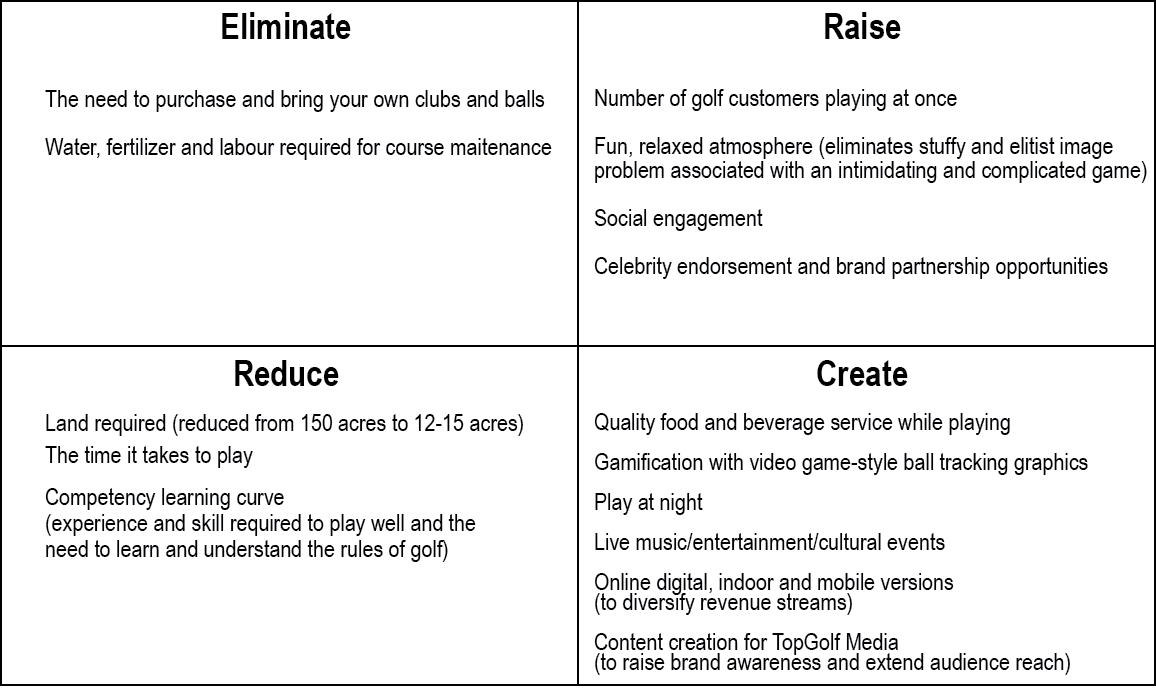
For more information on Topgolf, you can listen to our podcast episode here.
3. Women's Golf Day

Founded three years ago by Elisa Gaudet, Women's Golf Day is an annual global event that takes place on the first Tuesday of June. Women's Golf Day has unlocked a massively underserved market segment of golf non-customers: the millions of women interested in playing golf but feel intimidated by and unwelcome to participate in the sport.
They've managed to scale a four hour global event (46 countries/1000+ venues/35,000 participants in 2018) by crafting an experience (two hours of golf instruction followed by two hours of fun, social interaction) based on the feedback non-golfing women have provided.
To grow their share of a market, Women's Golf Day strives to retain and expand their existing customer base of non-golfing women by appealing to what BOS refers to as the "Three Tiers of Non-Customers". As outlined below, Women's Golf Day has created an event offering that reaches beyond the current recreational golf playing market by appealing to Tier 1 (Soon-to-be) and Tier 2 (Refusing) markets. As they gain traction and awarenes, Women's Golf Day is positioned to attract women and girls from the largest segment: The Tier 3 (Unexplored) market.
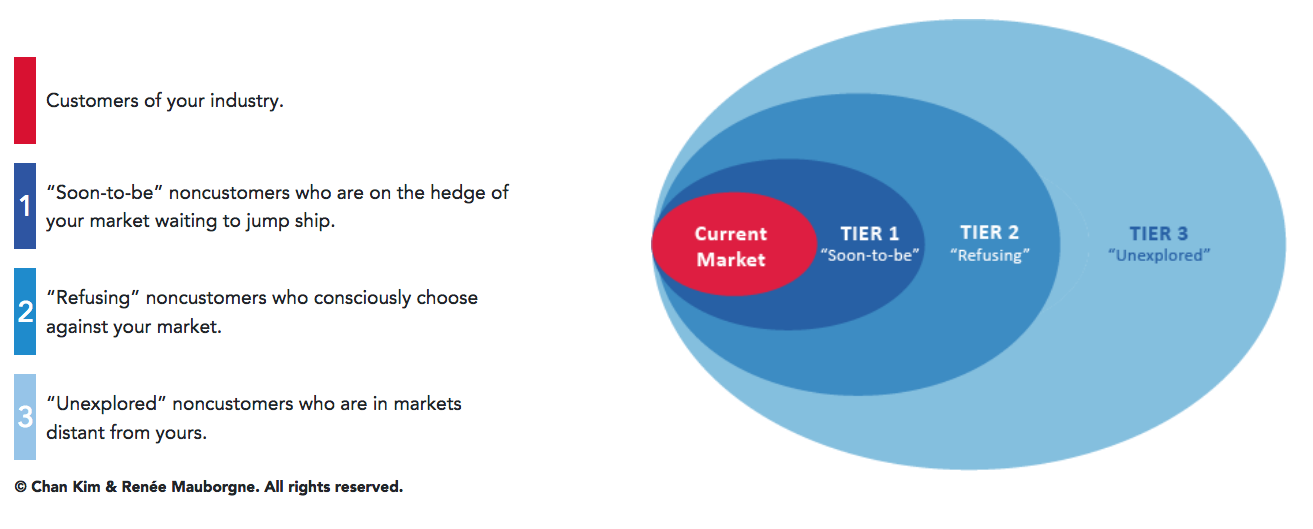
Following the Eliminate/Reduce/Raise/Create 'Four Actions Framework', Women's Golf Day has created a movement that doesn't compete with golf industry players, but instead creates a leap in customer value and experience. Here's what they've done:
• Eliminate golf facility renting/owning by partnering with the largest course ownership companies in the world
• Eliminate marketing and PR costs by having a great story to tell which media outlets and fans are eager to share
• Reduce staffing needs through a volunteer-based ambassador program
• Reduce the time and skill required to participate
• Raise the sense of community and belonging that appeals to women, along with the convenience of the event
• Create a social atmosphere around food, hospitality, music and fashion
To learn more about Women's Golf Day, listen to our podcast interview with Elisa here.
4. NextLinks

NextLinks “combines technology and entertainment to create a realistic and exciting next generation golfing experience". Unlike Topgolf, Nextlinks creates value by "partnering with pre-existing entertainment/restaurant venues and traditional golf destinations with proprietary technology-driven golf entertainment solutions. NextLinks re-purposes underutilized space without the need for new brick and mortar construction".
Founder Dave Shultz leverages his previous professional experience at GE to form his vision for NextLinks. Dave embraces a BOS mindset to to attract new golf entertainment customers who show little interest in playing 18 holes of traditonal golf. Their patented technology gamifies the golf experience both outdoors (their "Shots In The Night" installation at Indian Wells Golf Club is pictured above right) and indoors (their skills-based gaming "Putter's Lounge" for casinos below), combining laser projections and augmented reality to create immersive experiences that everyone can enjoy.

You can find our NextLinks podcast episode with Dave Shultz here.
Blue Ocean Strategy Case Study Analysis: Topgolf - "Everyone's Game"
To explain how Topgolf has managed to make the competition irrelevant, we will first plot all the factors which the traditional golf industry competes on. These factors are the consolidation of the Eliminate/Reduce/Raise quadrants from the "Four Actions Framework" I mentioned earlier. We chart the graph points of each factor based on an "Offering Level" ranging from high to low. Bear in mind that a factor ranked as high does not necessarily make it great or desirable.
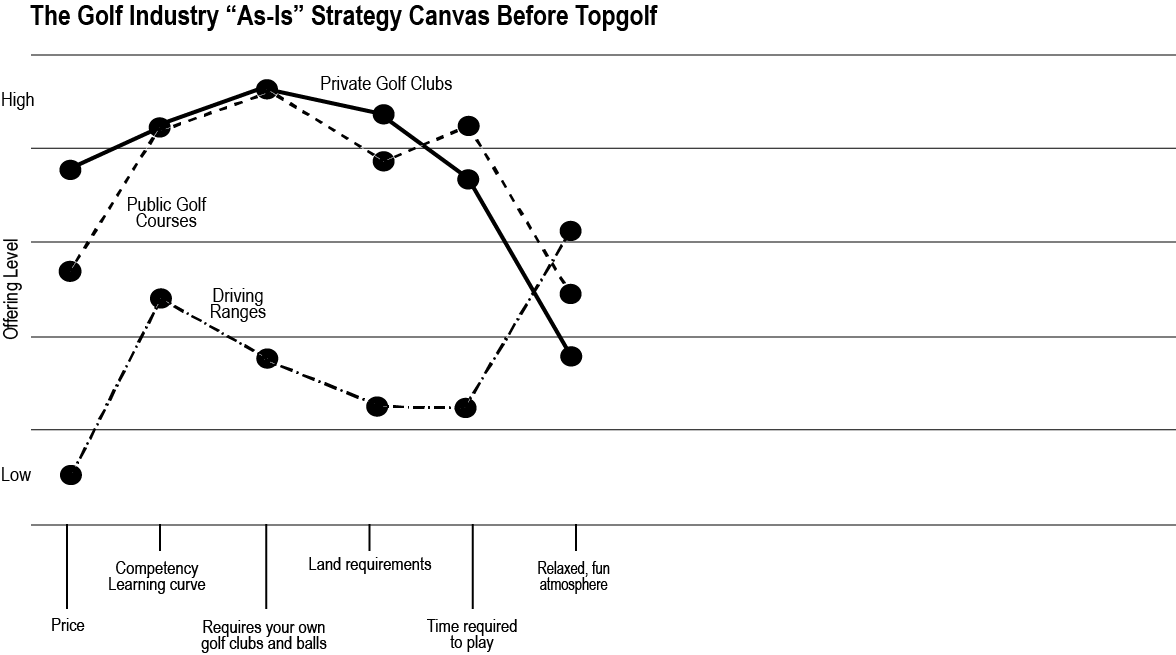
You'll notice that both public and private golf courses chart similar "Offering Levels" on the factors they compete on, while the driving range experience appeals to a slightly different market. Next, we'll chart Topgolf's BOS canvas to reveal how they not only eliminate, reduce and raise the factors which the golf industry competes on, but how they create new offerings that offer a leap in customer value, revenue and profits.

If this article resonated with you, take a deeper dive into Blue Ocean Strategy and their new book Blue Ocean Shift to learn how to position your product/service/experience offering for uncontested growth. Whether you're a scrappy startup or established industry player looking for new growth, you should check out their website for access to the tools and case studies that both educate and inspire.

About the author
Colin Weston is the Co-Founder of REVIVER Sport Entertainent, host of The ModGolf Podcast and Co-Founder of Startup Vancouver.
You can email Colin at [email protected] to join our monthly ModGolf Podcast newletter and/or share your thoughts about this post.
Twitter: @ModGolfPodcast
]]>

